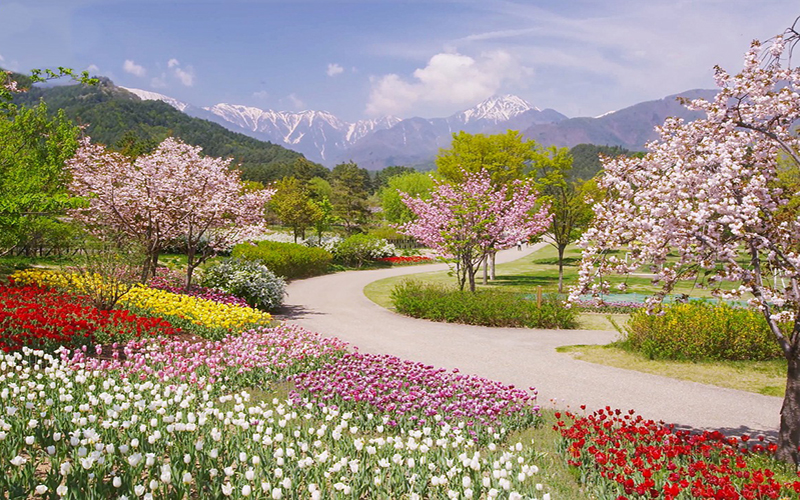rearing
Japan is a country with four seasons, and each season has its own characteristics. Goldfish also have their own problems and countermeasures in each season. Knowing them makes a big difference. In this article, we will explain how to keep goldfish in each season.
Table of Contents
Japan is a country with four seasons, and each season has its own characteristics.
For example, flowers bloom in spring, it gets hot in summer, the leaves turn red and start to fall in autumn, and it gets cold with snow in winter. Each of the four seasons has its own characteristics, which is also its charm, but living creatures need to adapt to them.
Naturally, goldfish are no exception.Problems arise seasonally and we should be quick to take action on them. Most of us are the ones who keep the animals without worrying about them. However, when problems do occur, we can prevent them from becoming bigger problems by taking measures when looking for the causes and in advance.
In this article, we will explain possible problems and countermeasures for each season.

Spring is the time of spawning in the goldfish world, from the end of March to May, which is generally the time for flower viewing. When goldfish begin to spawn, the males may chase after the females, weakening and killing the females. If you do not want your goldfish to spawn, or if you do not want to kill your goldfish, please keep the males and females separate before they spawn.Even if the female is kept separate from the male, she may still lay eggs. Of course, since the male is not with the female, the eggs will be unfertilized, so be sure to dispose of them as soon as possible. If left untreated, the goldfish may accidentally eat the eggs and die of indigestion, or the unfertilized eggs may slowly rot and become a breeding ground for fungi.
Spring is also the time of year when water temperatures change dramatically, and the risk of contracting diseases is very high. In particular, many diseases are caused by fungi, such as white spot disease and tail fungus disease, so it is important to take measures against these diseases, such as salt baths.

Summer is the most restful time of year, with less risk of disease than other seasons. However, it is a little early for those who keep their animals in air-conditioned rooms to take a break. The air conditioner lowers the temperature, which in turn lowers the water temperature. This will cause the water temperature to drop as well. When the water temperature drops, the immune system of the goldfish may decline. As their immune system declines, their risk of contracting diseases rises.It is also especially dangerous if the room is not air-conditioned 24 hours a day, but is kept in a place such as a living room where the air conditioner is not on during the day and is turned on when people come home and turned off just before going to bed. If you keep your goldfish in such a place, you should take measures such as moving them to a new location or directing the wind direction to the furthest place from the aquarium instead of to the aquarium.
And,The most important thing to watch out for in the summer is overfeeding. Since goldfish have a greater appetite in summer when the water temperature is higher, many people feed them more than at other times of the year. The problem is not that the amount of food is too much, but what happens afterwards.If a large amount of food is given to the goldfish, the food will be left uneaten and fall to the bottom. The bacteria breed on the uneaten food, leading to disease and deterioration of water quality. Therefore, in order to prevent water quality deterioration, please scoop up and discard food that has not been eaten for more than 5 minutes with a net. If it is difficult to do so, take measures such as reducing the amount of food you feed.

Autumn is the most exciting season in the goldfish world, with goldfish fairs and other events held in various locations.
The problem with fall is still the increased risk of disease. As in the spring, the temperatures are changing rapidly, and the risk of disease rises accordingly. However, unlike spring, diseases caused by fungi are more common in fall, but diseases caused by insects such as "butterflies" and "ground beetles" tend to be more common.
Basic measures include salt baths, as in the case of fungus. However, in cases caused by insects, the possibility of recurrence is very high if eggs remain after the insects have died, and correct measures can reduce the risk of recurrence. Autumn is also the season when many diseases caused by fungi such as white spot disease occur, so it is important to take early countermeasures.

In winter, the temperature drops and with it the water temperature. The risk of disease is low, but only "water mold disease" is more likely to occur than at other times of the year. If you see a cotton-like substance on the body, there is a possibility of water mold disease, so be sure to take precautions against it.
The most important thing to keep in mind during the winter is the timing of feeding. During the winter, goldfish may slow down and have a hard time developing an appetite. If you feed your goldfish when they have no appetite, there is a high possibility that they will leave the food behind and worsen the quality of the water. For this reason, many people shy away from feeding them. As mentioned in the summer section, you can scoop up the leftovers with a net or something, but if that is difficult, you can put water plants in the aquarium instead of food, so that the hungry goldfish will eat the water plants even if you don't feed them, and you don't have to worry about feeding them!And I recommend that you do so because you will be less likely to worry about whether or not you should raise the feed.
Also, some people cut feed (or do not feed at all), but this site does not recommend it. Cutting feed eliminates the disadvantages to feeding, and by cutting feed, the eggs are said to be in better condition for spawning as soon as they pass through the winter and enter the spawning season in the spring. However, most people who keep goldfish do not keep them to spawn, but to enjoy them, so it is better to think about not killing them or enjoying them before thinking about spawning, so there is no need to cut the feed. So, you don't have to cut off the bait. By cutting off the food, the goldfish will naturally become thinner and thinner. Also, when you start feeding them in early spring, some of them will refuse to eat. Cutting food often spoils the appearance of the goldfish. Therefore, we recommend that you reduce the amount of feed rather than cutting the feed. However, in some areas, such as the Tokai region and Hokkaido, it may be better not to feed the goldfish, so we hope you will be flexible in your measures.
The above sections have explained the problems and countermeasures for each season. Briefly, in spring and fall, the risk of disease is high and disease countermeasures need to be taken, while in summer and winter, it is important to pay attention to the amount of feed.Seasonal problems can be quite different in different areas and locations, and even among goldfish, so it is difficult to take measures that suit all. However, there is no need to repeat the mistakes made by our predecessors, so please take at least the measures described in the above section.